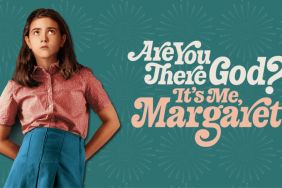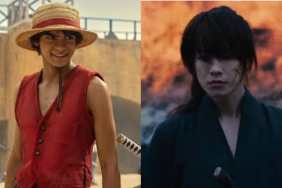Cast:
Kodi Smit-McPhee as Owen
Chloe Moretz as Abby
Richard Jenkins as The Father
Cara Buono as Owen’s Mother
Elias Koteas as The Policeman
Sasha Barrese as Virginia
Dylan Kenin as Larry
Chris Browning as Jack
Ritchie Coster as Mr. Zoric
Dylan Minnette as Kenny
Jimmy ‘Jax’ Pinchak as Mark
Nicolai Dorian as Donald
Rebekah Wiggins as Nurse
Directed by Matt Reeves
Story:
In Los Alamos, New Mexico, a young boy named Owen (Kodi Smit-Mcphee), who has been bullied mercilessly at school, learns he has a new neighbor, a young girl named Abby (Chloe Moretz). As the two becomes close friends, Owen finds an escape from the torment he suffers at school, although he soon learns that Abby is not at all what she seems.
Review:
As difficult as it must be adapting a popular book, it must be even harder when someone else has beaten you to the punch, and that’s the biggest obstacle facing filmmaker Matt Reeves’ follow-up to “Cloverfield,” an adaptation of John Lindqvist’s novel which has the onerous presence of the Swedish adaptation “Let the Right One In” hovering over its head throughout. If you’ve seen that movie, it’ll be impossible not to have it in mind as you watch many of the scenes in Reeves’ film play out in a similar fashion.
That aside, Reeves takes on the challenge, this time setting the story in Los Alamos, New Mexico during the early ’80s, opening with a framing sequence involving a police detective, played by Eli Koteas, exploring a series of deaths which have brought him to the hospital where a man was found disfigured in a car accident. The film then cuts back a few weeks to Owen, a quiet introverted boy who lives in an apartment building with his mother. He’s been getting bullied at school and his lack of friends his own age at home leads him to spy on his neighbors. The strange girl who moves in next door with her father seems to be impervious to the cold, walking barefoot in the snow and after a few encounters in the courtyard, the two of them become friends despite being outsiders. Meanwhile, the man who lives with Abby, played by Richard Jenkins, has been going out at night and killing teenagers, draining their blood and bringing it back home for his daughter.
In case you haven’t figured it out, Abby may look like a girl but she’s in fact an ancient vampire who needs blood to survive, but Owen’s crush on the girl makes him more curious than scared of her. The way their relationship develops over the course of the movie as they help each other out through tough times is what makes the film so unique from other romantic vampire films.
What Reeves really has going for him in spades is the amazing amount of talent, particularly the two young actors playing Owen and Abby. Chloe Moretz is proving to be a young talent matched only by the young Dakota Fanning, while Smit-McPhee delivers a stronger performance than he did in “The Road,” the two of them bringing so much emotion to this story of young love that it exceeds the earlier film in that regard. It may come as a surprise that Reeves maintains the slow and deliberate pace of that film, because one would expect a Hollywood filmmaker might create a livelier repartee between the kids, maybe something closer to an Amblin film. Instead, he wisely maintains a tone that constantly sends shivers down your spine, which shows an intelligence to his decisions as a filmmaker that may not have been as apparent from “Cloverfield.”
The decision to set the film in the early ’80s adds some interesting layers that may have not have been as apparent in the Swedish film, but most of the general locations where key scenes take place are essentially the same, whether it’s the apartment building’s courtyard or the school pool. Once in a while, he’ll diverse from the previous film by changing things up, such as Jenkins’ M.O. to hide in the backseat of his victims’ cars brings another level of suspense to his killings. Similarly, the inclusion of Koteas’ policeman investigating those murders and tracing them back to Abby’s house makes logical sense to the story and adds another climactic moment in the last act.
Reeves never skimps on the blood or gore, as the kills get progressively more gruesome, the make-up department doing a fantastic job on the physical FX. On the other hand, the CG work is weak in the scenes when Abby attacks one of their neighbors under a bridge and again, when she climbs up the wall of the hospital. These are two of the most effective scenes in the Swedish film but these same ideas are nearly ruined by the blatant CG that keeps them from working nearly as well in Reeves’ film.
Other than that, the film looks amazing due to the camerawork of DP Greig Fraser, who shot Jane Campion’s exquisite-looking “Bright Star” last year, and the ambient music and sound design by Michael Giacchino does a lot to create just the right mood.
The Bottom Line:
Granted, Matt Reeves’ adaptation of “Let Me In” suffers from having to play sloppy seconds to the Swedish film, but that doesn’t make it any less effective in terms of creating a truly memorable horror classic filled with the same degree of tension and emotion.










